Most kids love animals, and there’s something special about a horse. They’re big, they’re beautiful, and they can take you places you’ve never been before. But learning to ride a horse takes a bit of skill and practice. Horseback riding lessons are a great place to get started, if your child wants to learn to ride. Today, Tiana Kubik, Austin homeschooling mom of two, shares her children’s experience taking horseback riding lessons for the first time and has put together a great post with everything you need to know about horseback riding lessons for kids.

Horseback riding lessons for kids
Are you curious about horseback riding lessons for kids? Horseback riding can be a fun and rewarding activity for children. And the good news is that you don’t need to own your own horse to get started!
It’s important to know what to expect before signing your children up for riding lessons. My children recently started taking horseback riding lessons (as one does when you live in Texas), and we were so impressed with how much there was to learn about horseback riding. I wanted to pass on the great info we learned about lessons to help other parents that might be considering them.
So, here are a few things to keep in mind when signing up your child for horseback riding lessons.
Benefits of learning horsemanship for kids
Horsemanship is the art or practice of riding on horseback, but it also involves physically prepping and caring for horses, being knowledgeable about their habits and needs, and showing responsibility for the comfort and communication of horses. Ultimately, being a great friend and partner to the animal before you ride, during your ride, and after you ride. The care of horses is a great lesson that all children can benefit from learning.
There are many benefits of learning good horsemanship for kids. Here are a few benefits of horseback riding that your kids can learn during riding lessons:
- Introducing horseback riding to young children can help them develop a love for horses and the outdoors.
- Horseback riding lessons can teach children important life skills, such as patience, discipline, and responsibility.
- Riding a horse is a great way for young kids to get exercise and spend time outside in the fresh air.
- Caring for another living being is a powerful lesson for children. Not only does it teach them to care for animals, but compassion and care for horses also translate to compassion and care for each other.
- Horseback riding lessons offer something for everyone. Riders of all ages and skill levels will gain something from a horseback riding session. Easy-going children will enjoy an easy trail ride or therapeutic time with the horses. Children who need sensory input will enjoy barrels or a bit more physically challenging ride.
Horseback riding lessons
Different farms and ranches may offer different types of horse riding lessons. Some may only offer group lessons for kids, where they take lessons with other children the same age or skill level. Others may only or also offer private lessons (or individual lessons) so that your child can get one-on-one time with the instructor exclusively. Some offer lessons year-round, while others may only offer lessons during particular seasons (e.g. summer camps, horse camps, summer programs, etc.). Others may offer individual classes or lesson packages.
Many ranches also offer a variety of classes based on riding style, skill level, age of kids, etc. If your child is just getting started with horseback riding lessons, look into “introductory” lessons.
Types of horseback riding styles
There are many different styles of horseback riding classes available for kids. English riding lessons teach the basics of horseback riding, including how to sit in the saddle and hold the reins. Western riding lessons focus on more advanced skills, such as roping and barrel racing. Barrel racing is a popular event at rodeos, where riders race around barrels set up in a cloverleaf pattern. Many of these skills are demonstrated in horse shows that your child could participate in, if they reach the appropriate skill level.
No matter what type of lesson you choose, your child will learn valuable skills and have a lot of fun!
Western vs. English horseback riding
There are a few key differences between Western-style and English-style horseback riding. Depending on what your child is interested in learning, you may want to choose a horseback riding lesson that leans toward one style or the other. Western lessons for young riders could be very different from English-style riding lessons. Both take practice and hard work to learn. Here’s what you need to know about each.
Saddle differences
Perhaps the most obvious difference is in the saddle. Western saddles are generally much larger and heavier than English saddles, and they have a large horn on the front of the pommel. This horn is used for steering the horse, as well as for roping cattle. The stirrups on a Western saddle are also wider than those on an English saddle, which helps the rider to stay in the saddle when riding at a fast pace.
Western riding lessons may include:
-
- Reining: This is a judged event where the rider guides the horse through a set pattern of circles, spins, and stops. The horse must be responsive to the rider’s commands and appear to be working willingly.
- Cutting: This is another judged event where the rider works to keep a cow from returning to the herd. The horse must be able to maneuver quickly and smoothly to stay ahead of the cow.
- Barrel racing: This is a timed event where the rider navigates a pattern of barrels. The horse must be able to turn quickly and smoothly to stay on course.
- Pole bending: This is another timed event where the rider weaves in and out of a line of poles. The horse must be able to maintain a smooth pace and make sharp turns.
English riding lessons may include:
-
- Dressage: One of the most common events, which is often compared to ballet on horseback.
- Jumping: Tests the horse and rider’s ability to negotiate a series of obstacles in a timely and efficient manner.
- Eventing: Another popular equestrian sport that combines elements of both dressage and show jumping.
- Horse racing: perhaps the most well-known of all the English horse riding events.
Equestrian Therapy
Equestrian Therapy is a form of therapy that uses horses to help people with physical, emotional, and mental disabilities. The therapist uses the horse’s movement to help the patient achieve their goals.
Equestrian therapy can help people with a wide range of issues, including:
- Physical: Equestrian therapy can help improve balance, coordination, and muscle strength. It can also help people who have trouble walking.
- Emotional: Equestrian therapy can help people who are dealing with anxiety, depression, or stress. It can also help people who have trouble controlling their emotions.
- Mental: Equestrian therapy can help people who have ADHD, autism, impaired cognitive ability, or other mental disorders. It can also help people who have trouble concentrating or remembering things.
Equestrian therapy is a relatively new field, but it has already helped many people with disabilities. If you think equestrian therapy might be right for you, talk to your doctor or therapist.
Finding the right place to take horseback riding lessons
Choosing a reputable instructor is important for both safety and your child’s enjoyment of the lessons. You want to be sure that the ranch you choose is an expert in horses AND in working with children. The lesson programs should be tailored for children, and the horses should also be accustomed to small riders. Both the lesson horses and the trainer need a special skill set and level of sensitivity that not everyone has.
If you are new to horseback riding, this may mean a lot of research and discussions. While every school/farm/ranch has its own way of doing things, researching several places will give you a good idea of what is considered standard. It is important to remember that even though horses are generally gentle giants that they are large strong animals, and safety is number one, especially when small children are involved.
How to choose a reputable riding instructor
Here are a few ways you can choose a reputable horseback riding instructor:
- Ask your communities for recommendations: Don’t know where to go for lessons or the best places in the area? Ask your local parent groups, co-op, or school communities. A ranch with a great reputation is likely to be a good fit for you!
- Meet and greet: If the farm/ranch offers a “Meet and Greet” or an opportunity for you to come in and tour, take it! This is a great opportunity to get to know the teachers, horses, and staff in a low-pressure environment. This is also a great time to see the recommended gear and ask questions face-to-face.
- Consider your goals: Some ranches are focused on being more competitive, and some are more focused on riding for enjoyment. Both can be fantastic experiences, but you will want to know what your goal is when choosing.
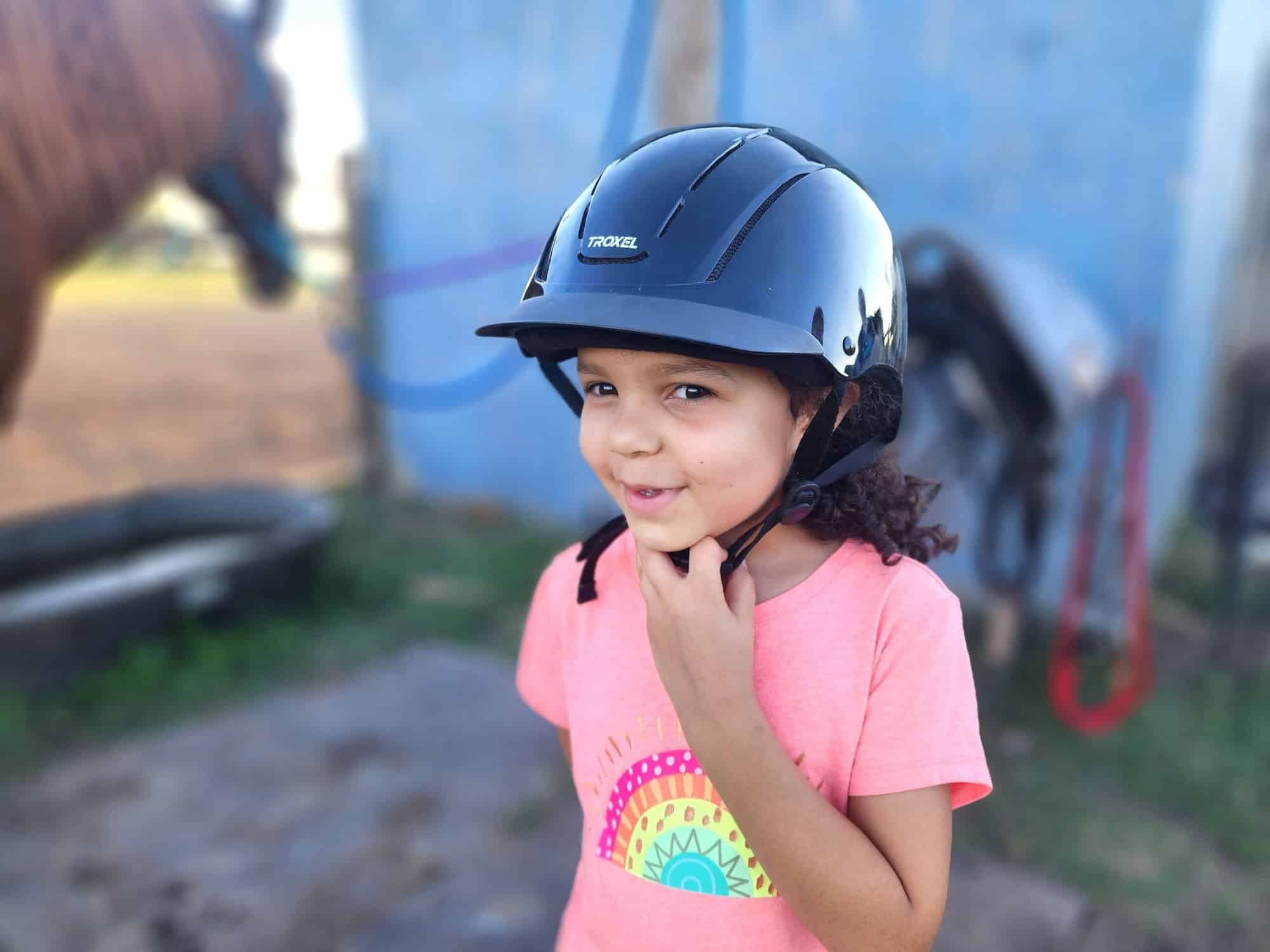
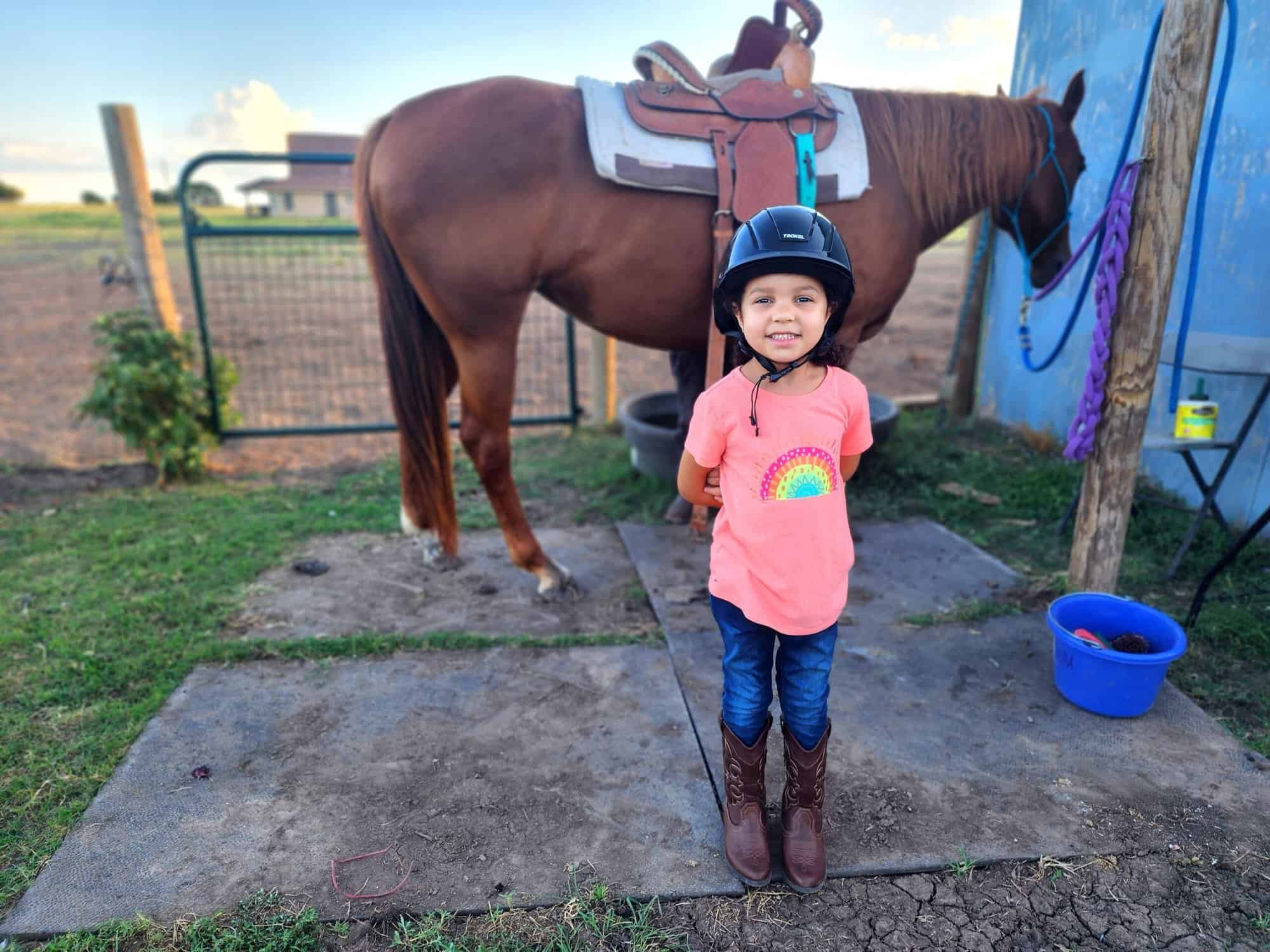
Horseback riding clothing and gear for kids
One of your first questions when signing up for lessons may be what to wear when horseback riding. Be sure to dress your child in comfortable, weather-appropriate clothing for horseback riding. Here are a few other things you should keep in mind when dressing your child for riding lessons.
- Footwear: Riding boots aren’t just stylish; they actually have a function in the comfort and safety of riding. For younger riders, you may be able to get away with cheaper boots, but ask your ranch instructor what their recommendations are.
- Helmet: While some places may allow your child to ride with a bike helmet, equestrian helmets offer the best protection for kids when learning how to ride. Many ranches require them, especially for older and more advanced riders that are riding faster and taking more risks.
- Pants: Long pants are recommended to prevent rashes on their thighs. Jeans seem to be the preferred type of pants, but anything that protects their legs will work.
Personal gear items, like helmets and boots, are usually your responsibility. However, when you’re first getting started, some places offer ones that you can wear while at your lesson. This is great for the first couple of lessons so that you can test the gear and make sure your children really want to do the lessons before investing in their own set.
What to expect in horseback riding lessons
Most ranches believe in horsemanship and not just riding lessons. This means that lessons at any experience level will include education on horses, instruction, and practice of caring for the horses, as well as riding lessons. A typical lesson may look like the following:
- Preparing the rider: Putting on boots, helmets, spurs, or any other gear that may be worn by the rider.
- Preparing the horse: When interacting with a horse, it is important to communicate with the horse to let them know what you are doing and where you are, especially as you cross their body. Being kicked by a surprised horse is not part of learning to ride.
- Cleaning and brushing the horse: This helps to make sure that the hose is healthy and comfortable with the saddle on. Brushing the horse’s back is essential for making sure there is no debris on them when you saddle them.
- Saddling the horse: Placing the saddle pads, saddle, and bridle on the horse is an important part of learning how to ride properly. For younger riders, there may also be buddy stirrups if their legs do not reach the stirrups on the saddle. Some ranches have small horses that make it easier for children to saddle and ride on their own.
- Riding lesson: This will vary depending on the age and skill level of your rider. Consider your child’s age and abilities. Horseback riding can be physically demanding, so make sure the instructor is aware of any limitations your child may have. Introductory lessons will probably start (and stay) in the corral. More advanced riders may add trail rides or training with apparatuses.
- Caring for the horse after the lesson: Removing the saddle and bridle and cleaning gear. Some ranches may have you return the horse to a stable or shelter; others may have you leave them to enjoy the outdoors
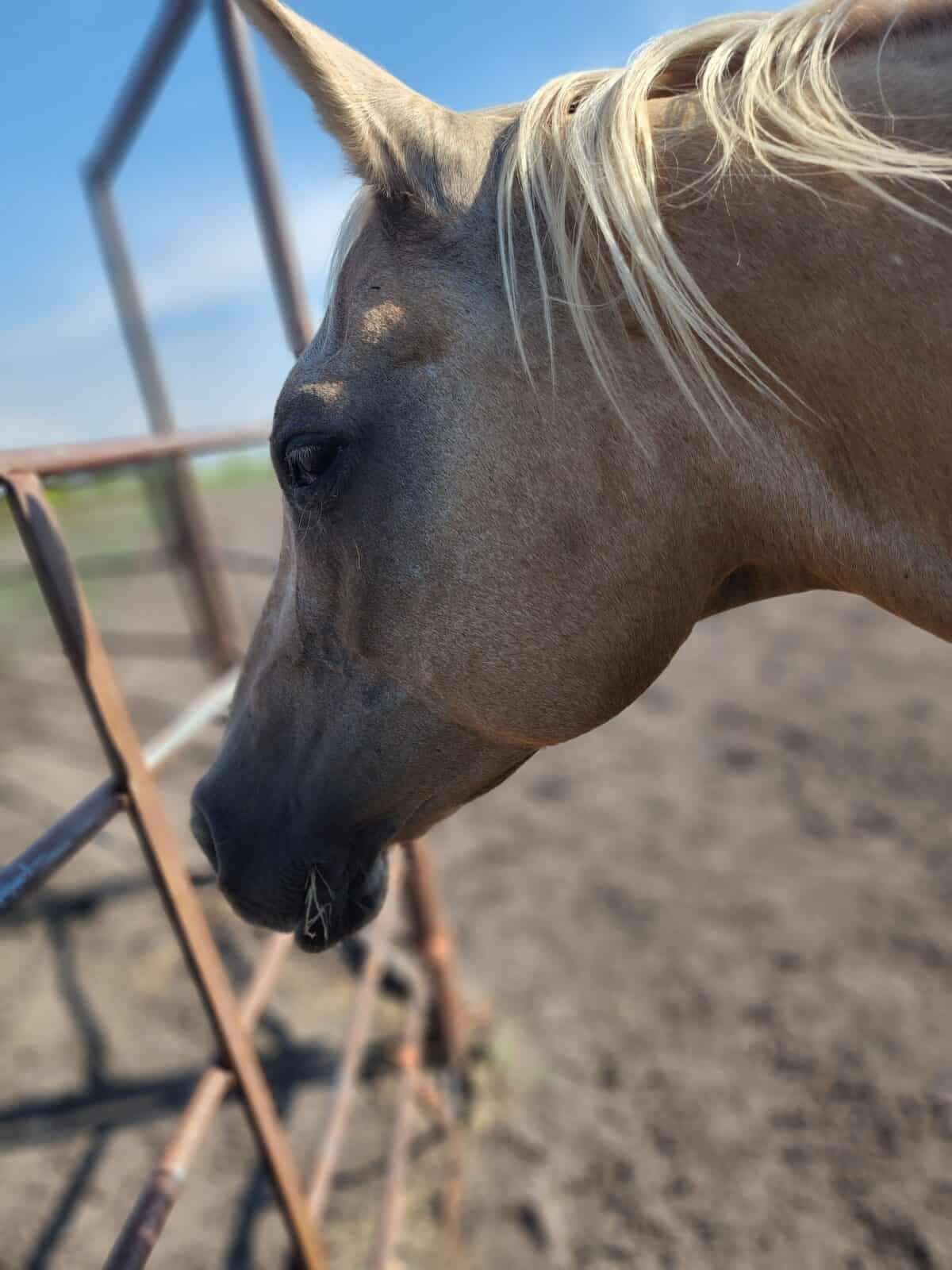
![]()
![]()
What to expect in horseback riding lessons for kids
Horseback riding is a great activity to teach your kids. It’s important to find the right lesson for them and to be prepared for the lessons before you start. And parents need to be prepared to take an active role in their child’s lessons. Some ranches may ask for help with grooming or tacking up the horse, and you’ll want to be there to encourage and support your child during the lesson.
No matter how you choose to engage with horses, they can provide a fun and loving relationship for your child and family. With a little planning and preparation, horseback riding lessons can be a fun and rewarding experience for both you and your child. If you have horse-crazy kids, I hope this post has helped you understand the basics of what’s included in horseback riding lessons and prepared you for your child’s first lesson.
Are your kids ready to ride?
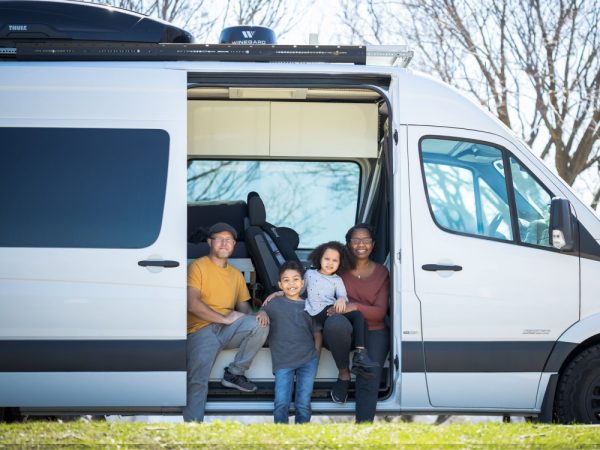
About the author
A city girl through and through, Tiana wasn’t always thrilled with outdoor adventures. However, learning the importance of nature + play through her journey to a Master’s in Early Childhood Education changed her heart. She still prefers the hustle and bustle of city life. She also has learned to love all that nature is and gives. Tiana has discovered unbelievably amazing North American destinations by traveling in a DIY converted Sprinter Van with her husband and two kids. She looks forward to new adventures and discoveries every day.
You can find more from Tiana in the following online locations:
Instagram: @usalongtheway
RWMC Posts: Tiana Kubik

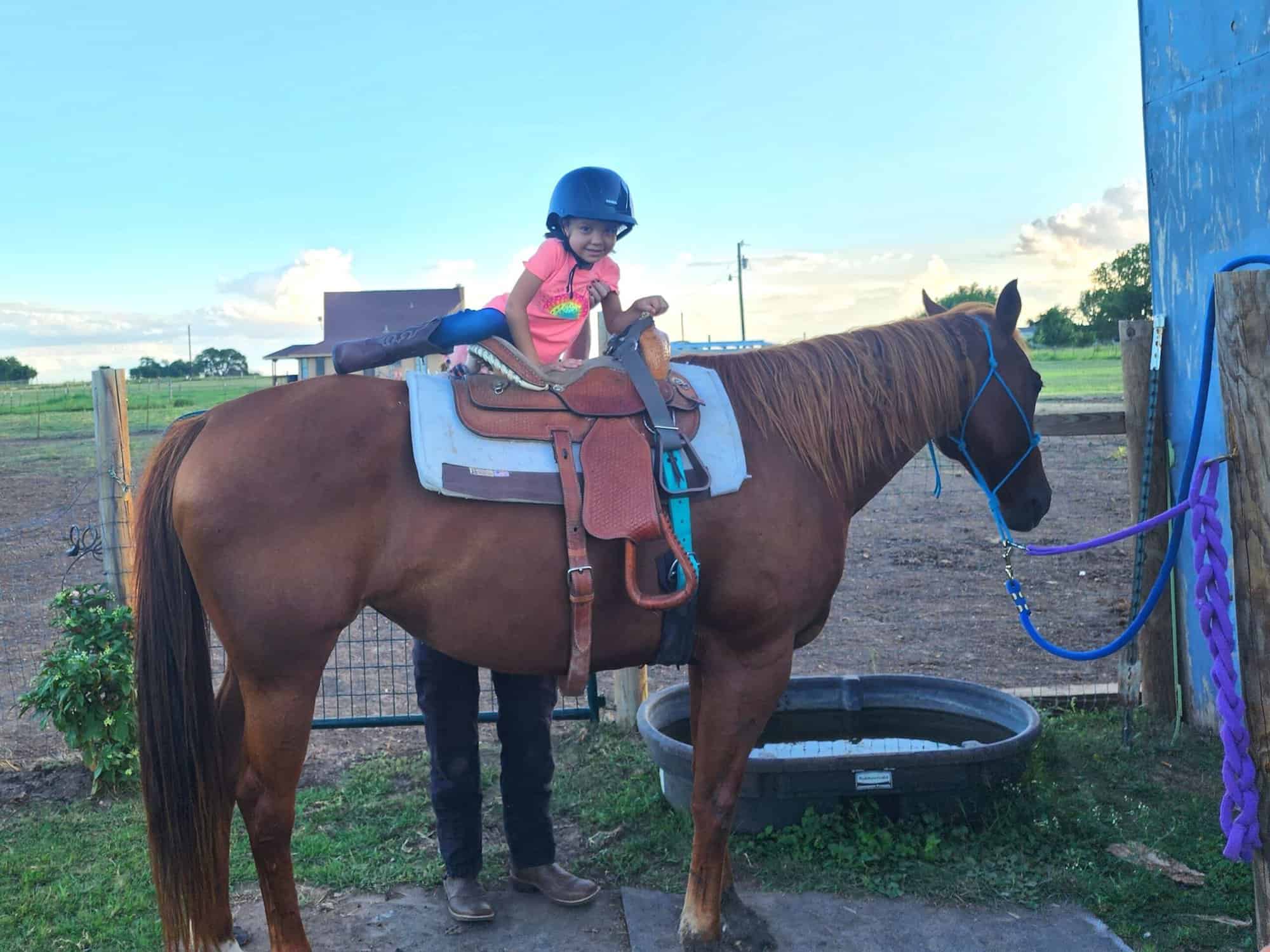
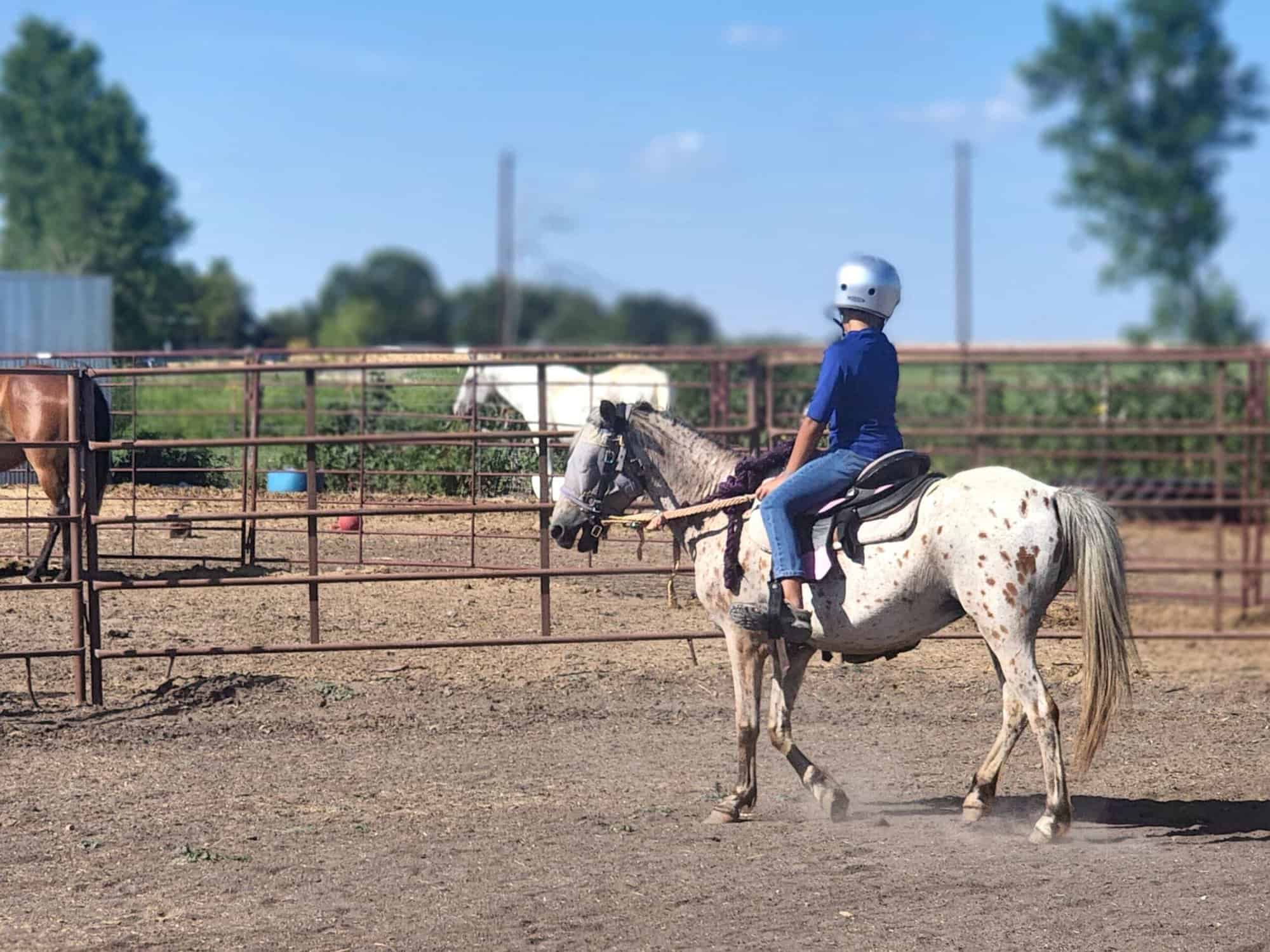
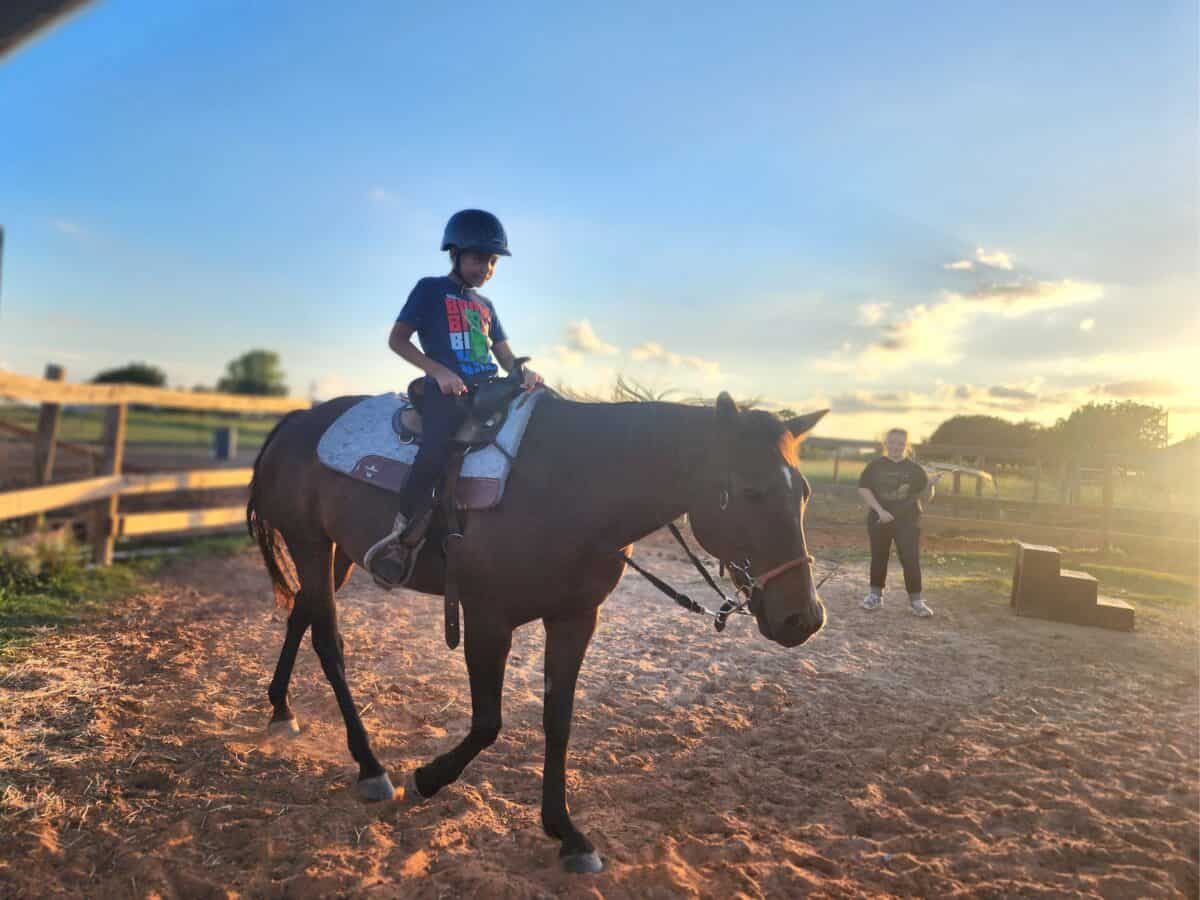
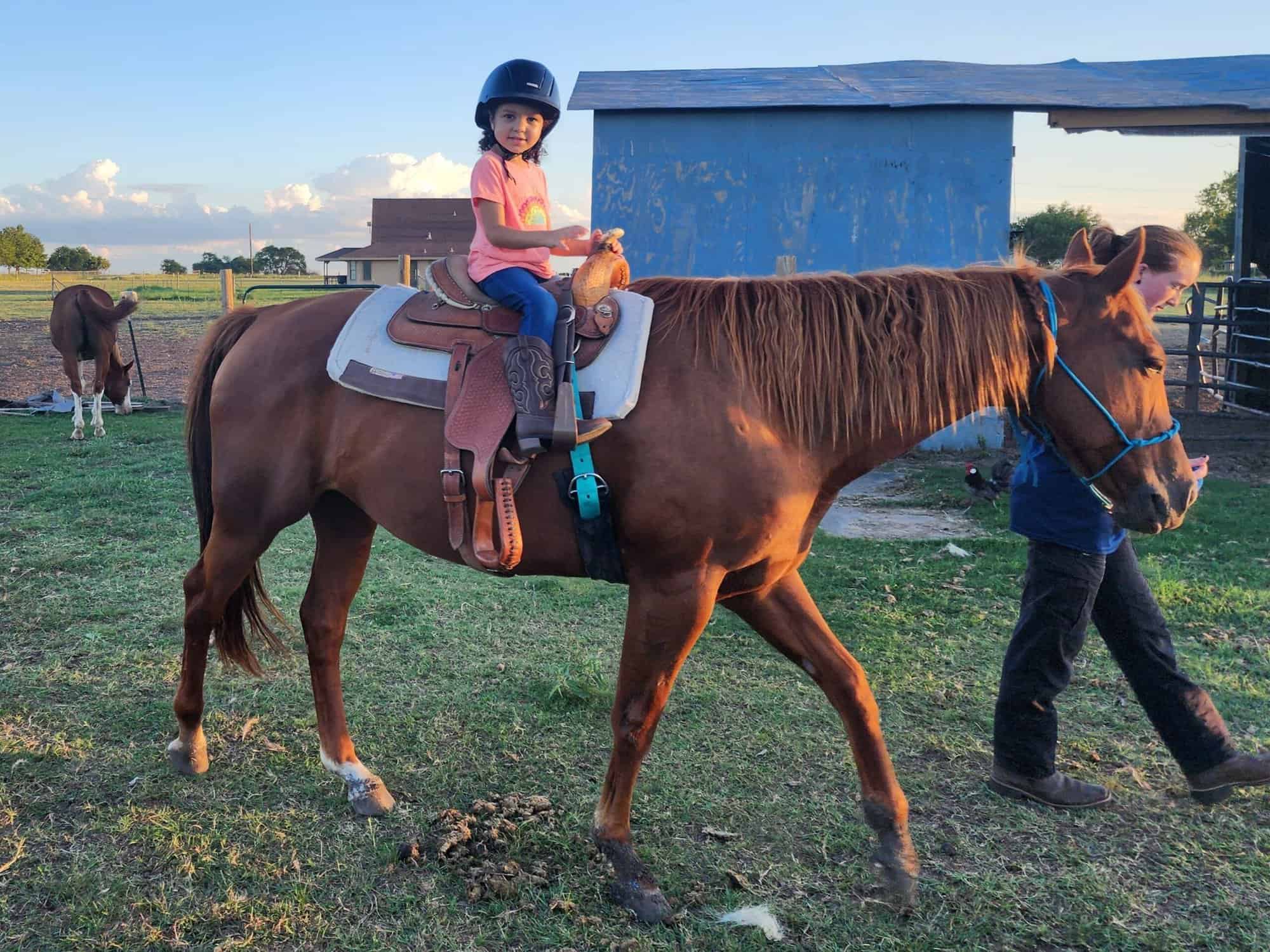
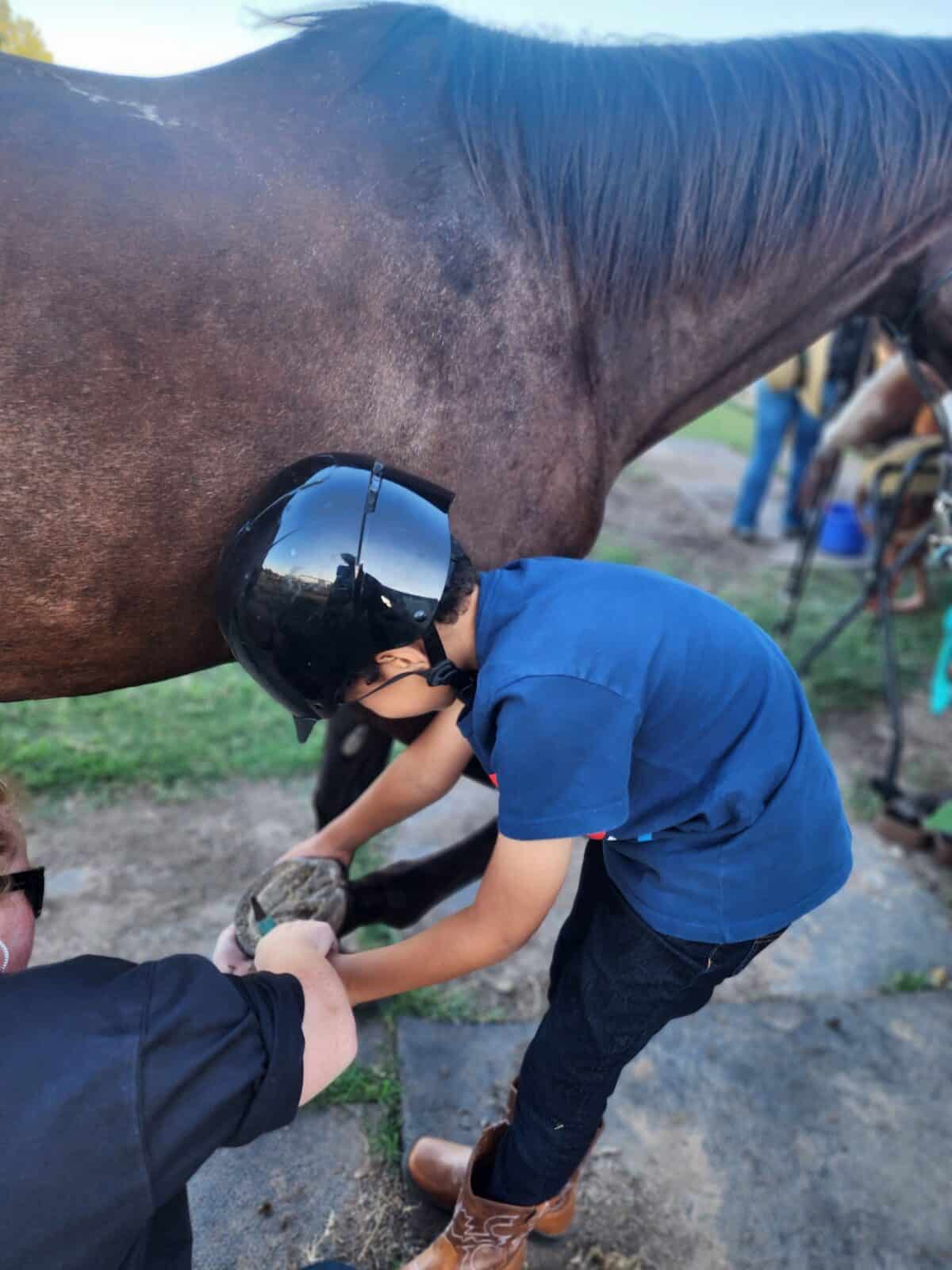
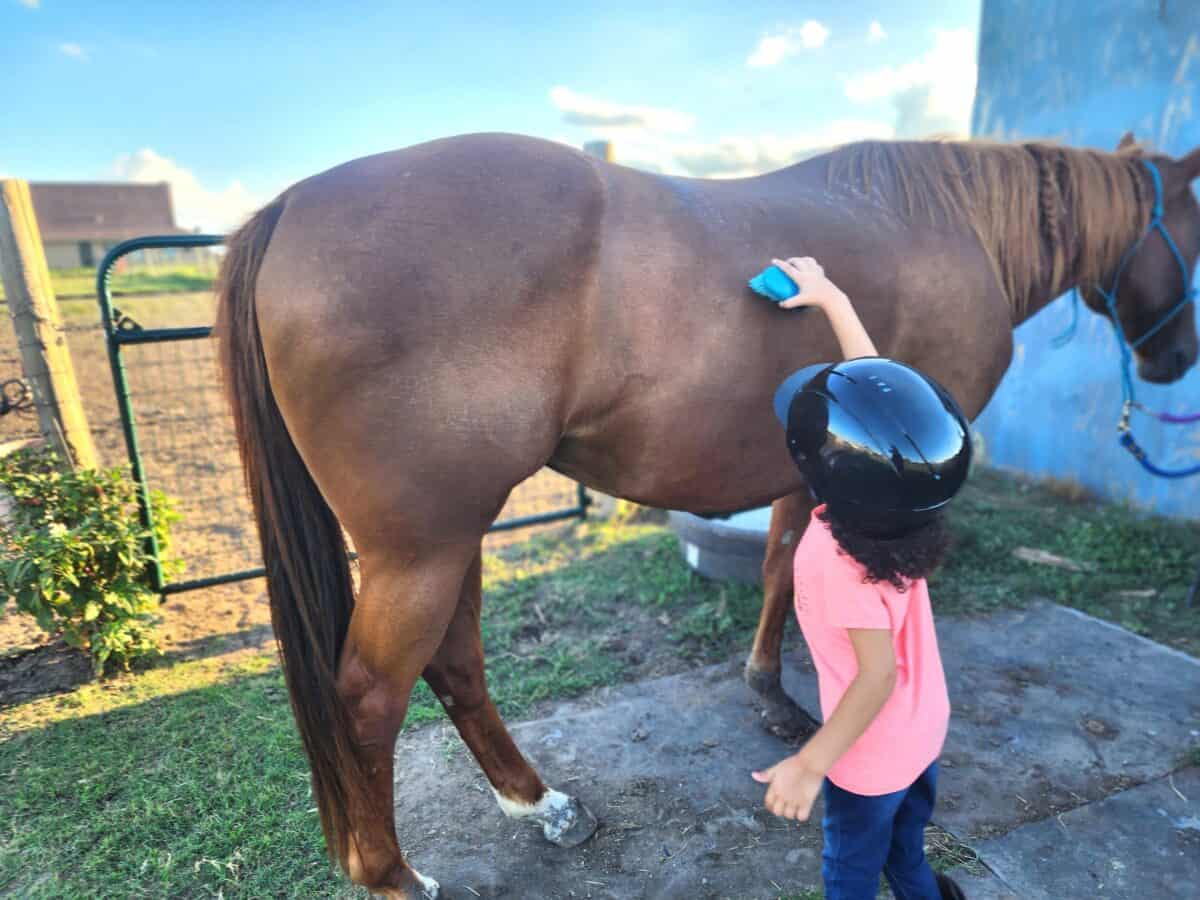







3 comments